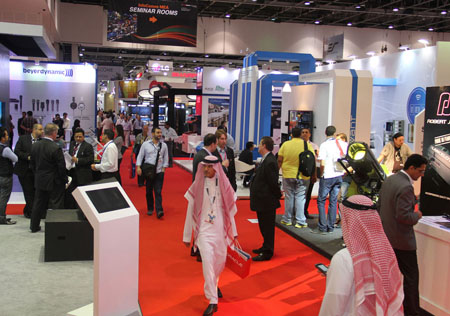From single-building and single-campus audio distribution to audio delivery to external locations, IP audio offers high-quality, cost-effective solutions, writes Johannes G. Rietschel, CEO of Barix Multipoint audio encompasses a handful of design concepts. The appropriate concept depends greatly on the reach of the system, and the source of the audio. Most multipoint systems typically involve […]

From single-building and single-campus audio distribution to audio delivery to external locations, IP audio offers high-quality, cost-effective solutions, writes Johannes G. Rietschel, CEO of Barix
Multipoint audio encompasses a handful of design concepts. The appropriate concept depends greatly on the reach of the system, and the source of the audio. Most multipoint systems typically involve sending audio from one to many zones within the same facility; or from one to many external locations on the same campus. How this is most effectively accomplished is dependent on the mode of transport.
CobraNet and EtherSound based systems, for example, enable distribution of very high-quality audio from one to many points locally. However, these typically better serve live-staging applications as opposed to general audio distribution in schools, hospitals and office buildings. Facilities with powerful in-house digital production system may look to these transport methods. CobraNet is especially regarded for low latency, minimising delay as audio is delivered to more than one location.
Schools, mosques and other multi-zone facilities are increasingly looking to IP for reliable, low-latency audio transport. IP audio, in addition to supporting single-building or single-campus audio distribution, offers a robust transport architecture for delivery to external locations. While this might be more typical of broadcast or retail audio distribution, opportunities certainly exist for networking sermons and performances to
distant mosques and other locations.
What makes IP potentially very attractive to schools, mosques, office buildings and healthcare facilities is the ability to take advantage of
existing network infrastructure for audio distribution and to centralise other applications on the same network. This clears the path to cost-effectively roll out multipoint audio and other network-supported services while maintaining the high audio quality and reliable transport required.
The foundation
Think of IP distribution as a virtual audio cable. The network is the foundation for the hardware that will support the overall solution. There is of course some actual real wiring in the network infrastructure (though far less complex than the legacy spaghetti bowl). The ability to use that existing infrastructure will amount to noticeable cost savings, provided the wiring is for a shareable Ethernet network with appropriate cable
lengths, links and switches to support multi-point audio transport.
Hardware requirements are generally simple. An IP encoder is required at the source point to accept an analog or digital audio output from the router. These can cost as low as $400 depending on choice of product. Each receive site will require an IP decoder to accept the signal as transmitted over the network. A good decoder will be capable of receiving a variety of audio files (mp3, PCM, AAC, etc.) and decode it back to XLR-balanced or unbalanced audio for playout over the loudspeaker system. Each amplifier requires a decoder, which can cost as little as $200
apiece. Decoders with built-in amplifiers can be used for areas with lower audio power needs some can even be powered over the network
cable (PoE), further simplifying the wiring.
Perhaps the most attractive point of employing an IP infrastructure is the ability to centralise other services to the same network. This means providing a central point of operation for building systems, such as lighting and HVAC control. Security systems can easily be added, accommodating IP cameras and access control technologies on the network. Other possibilities include two-way audio, enabling intercom communications at help points and other general locations.
Deployment decisions
The true difference in multipoint IP audio lies in the network characteristics and layout of the system. One question to answer is whether synchronous playout is required. This is a must if nearby zones are audible in addition to an audiences local zone. This is mainly an issue in single-building multipoint systems, where audio from one room might bleed into another.
We call this scenario acoustic vicinity.
The main challenge of distributing to multiple points with acoustic vicinity is to ensure an enjoyable listening experience while walking from zone
to zone. This will require split-second accuracy across the network i.e., synchronous delivery to multiple points that are within acoustic reach of each other. This is easily achieved with a standard, wired network connection. A 100MB Ethernet connection will do the job, supporting uncompressed, low-latency audio (about 2MBit/s). This can be easily be deployed within a single building, at a generally reasonable cost.
A multipoint network to more than one building or location on the same campus will not have acoustic vicinity, but will have challenges in
the physical sense.
We call this second scenario physical vicinity.
The benefit of this deployment is that the audio does not have to play out with to-the-second accuracy. In a live performance, a 500-millisecond delay between the stage and other campus locations will not adversely affect the audience experience. This also allows the facility to add compression to the mix, reducing the bandwidth requirements compared to a single-building system with acoustic vicinity.
Multi-building, or multi-location systems on a single campus will typically require routers to pass audio over the network. Use of multicast distribution will reduce network load, pushing a single stream with mp3 or another form of compression. This still provides very good audio quality, but reduces bandwidth requirements tenfold: a 2MBit/s audio stream requirement will reduce to about 200kbit/s.
The third scenario uses the public internet, 3G or VPN connection to deliver the audio stream to external, distant locations. This can include other mosques, a radio station or even housebound worshippers. This scenario essentially uses infrastructure that the church or facility does not own and cannot control. One big difference with the third scenario is that multicast is not an option. Multicast requires a rebroadcasting server, such as Shoutcast or the Barix Reflector Service (see sidebar), to be achieved cost-effectively. Such services provide an uplink to the internet for distribution to external locations.
Performance venues or worship facilities delivering sermons, concerts and other live services and events to other locations, FM transmitters
or cable head-ends will find this to likely be the only cost-efficient route for IP distribution. This would be enabled similarly to a video webcast, employing a streaming server to distribute the signal to locations equipped with the applicable IP decoding equipment.
Some facilities may find the need to deploy audio systems for all of these scenarios at one time. In this case it is recommended to use multiple encoders at the source point. This will allow the facility to employ low-latency streaming within the building without the expense and
complexity of employing the same technique for external delivery.
The real beauty of IP? It is simple: Anything is possible over the network.













































































